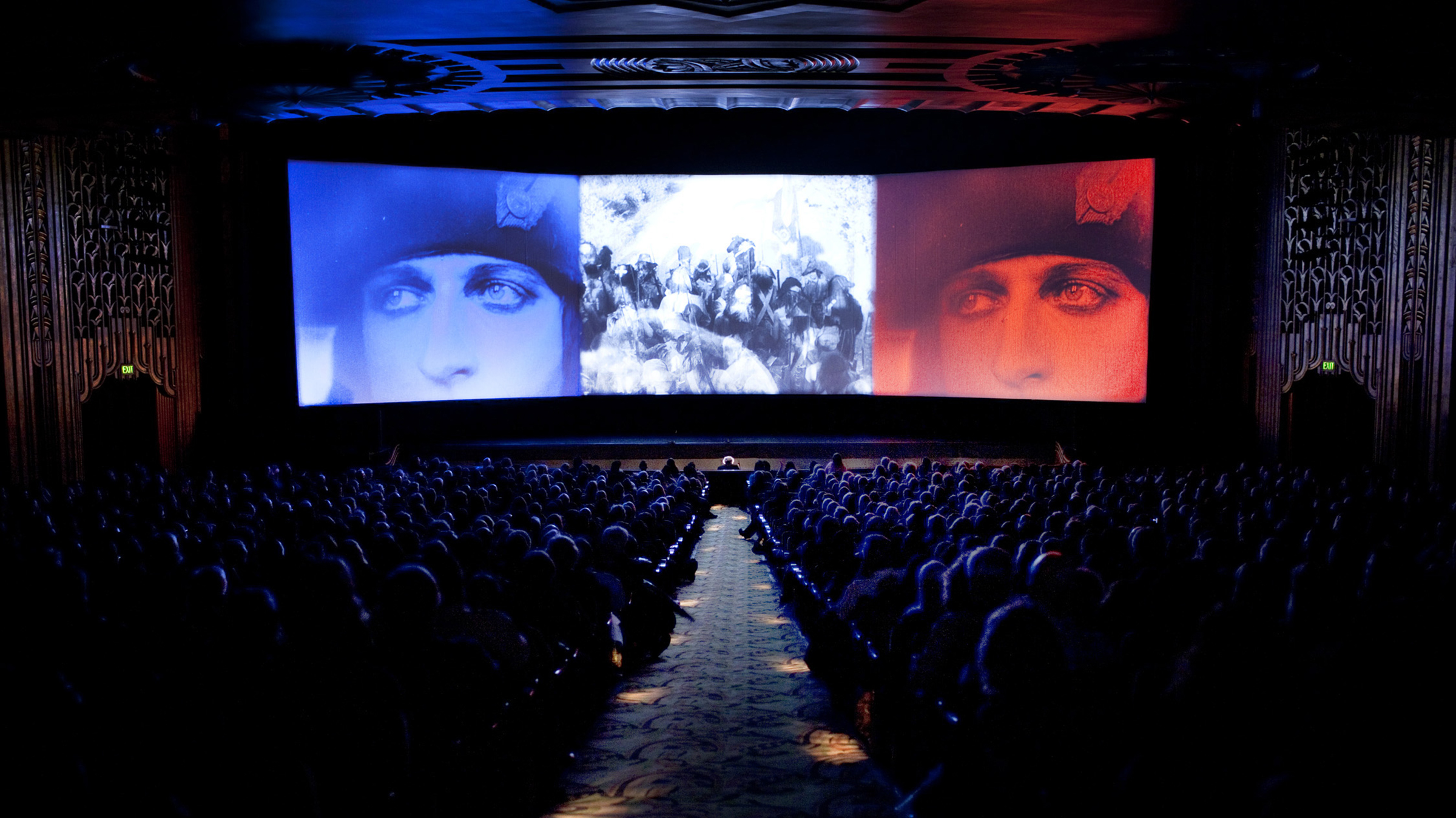I was traveling on the BART to Oakland, where the Silent Film Festival was staging four special screenings at the Paramount Theatre. As a train approached, I checked the indicator above my head. It read: “DON’T MISS NAPOLEON!”
What kind of organization had brilliant ideas like that, I thought. (I learned that Bruce Goldstein, of Film Forum, was in charge of publicity.) These proved the finest screenings of my favorite film.
When I was fifteen, I had found a couple of reels of Napoleon on 9.5mm and had been so astonished I had sent the director, Abel Gance, a fan letter. And received a reply! It led me, over many years, to restore the film to something approaching the original.
Of all the individuals responsible for the success of Napoleon, like Bruce, I remembered Liam O’Leary, deputy curator of the National Film Archive (NFA) at the British Film Institute. I had become a member of the BFI at thirteen and had met Liam who was also a 9.5mm enthusiast—his collection had helped him in writing his book, Invitation to the Film (1945). He had been a documentary filmmaker and campaigned for years for an Irish Film Centre. He was endearingly Irish, which appealed to my Irish father, and he became a family friend as well as my cinematic mentor.
Liam rescued so many films for the archive; I was with him when he found Lois Weber’s Suspense(1913), a technically imaginative thriller from the nickelodeon period. And he discovered a Victor Sjöström film in a chicken run! In 1956 he even met Sjöström, walking across Hyde Park. Afterwards, he sent him a note. Sjöström replied, “How can I express my feelings when I read your letter? How my old heart was warmed, yes warmed. Believe me, this is not an empty phrase of gratitude ….”
Liam thought so highly of what he could see of Napoleon, he told his boss, Ernest Lindgren, curator of the NFA, that he should show it to the staff. Lindgren replied that he had seen Napoleon in Brazil, and that he hardly thought it worthy of being called a film.
Journalist Francis Koval had actually met Abel Gance, and he gave me a photograph of the great man. I showed it to Liam.
This is hard to believe, I know, but a short time later, Liam stepped into the BFI reception and saw the man in the photograph. Gance was equally surprised—he hadn’t made a film for twelve years. This was 1955, when Cinerama was causing a sensation. It had been partially inspired by the panoramic triptychs of Napoleonand Gance had come over to see how close it was to a new widescreen process he was working on. After the show, he walked down Shaftesbury Avenue and saw the sign: BRITISH FILM INSTITUTE.
Liam arranged a small gathering at the National Film Theatre (in Waterloo, ironically) and tried to get me on the phone. My mother explained I was at school, taking an exam. But then she heard the name Gance … Parents were not supposed to telephone the school unless there was a serious reason, so she didn’t have to give one—she just adopted the right tone.
I arrived at the NFT at the same time as Gance, a handsome man of sixty-five who had one serious flaw. He didn’t speak English. However, as he put it, enthusiasm crosses all barriers … One could not have imagined a more eloquent, charming, or amusing character.
I regret only that he did not live to see one of those four momentous screenings at Oakland—with a huge screen, audiences of three thousand, a full orchestra playing Carl Davis’s tremendous score, and the standing ovations that followed. Pure Live Cinema! SFSFF should have received a Legion of Honor.
Nevertheless, a comment from a member of the staff at San Francisco’s French Consulate was compensation enough: “I am speechless,” he said. “In both languages.”
Renowned film scholar and restorer of silent-era cinema KEVIN BROWNLOW contributed the essays on The Fire Brigade and Smouldering Fires for this year’s festival.

